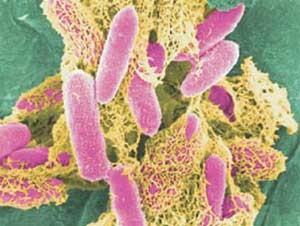How Do Bacteria Hunt Without Eyes or Noses?
 A team of scientists from the University of Utah, led by Professor John Parkinson, has revealed that despite lacking eyes and noses, bacteria can still hunt for food using sensors concentrated at one end of their bodies.
A team of scientists from the University of Utah, led by Professor John Parkinson, has revealed that despite lacking eyes and noses, bacteria can still hunt for food using sensors concentrated at one end of their bodies.
This structure allows them to orient themselves towards food sources for purposeful movement.
The experts believe that the dense arrangement of sensors creates a highly sensitive “nose,” enabling bacteria to detect food from great distances. For instance, when observing Escherichia coli (a common bacterium that causes intestinal diseases), the researchers found that these bacteria possess extremely sensitive receptors densely concentrated at one end.
This system allows them to quickly recognize amino acids in their food. In another experiment, scientists utilized gene transfer methods to create Escherichia coli bacteria with receptors three times denser than normal. As a result, these modified bacteria could sense food sources within a radius twice as wide as that of other bacteria.
NGUYEN SINH


















































